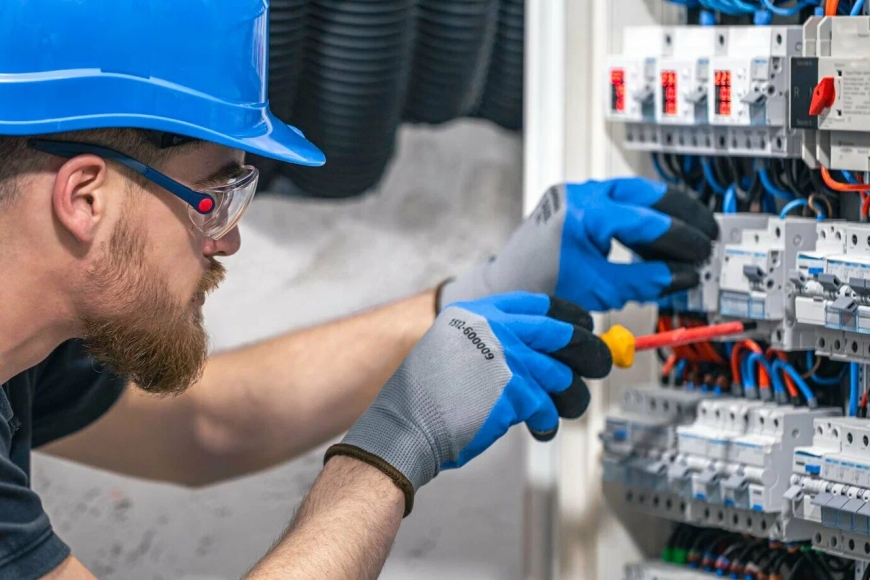What Is the Difference Between 1st Fix and 2nd Fix Electrical Work
This blog will explain the difference between 1st fix and second fix electrical work and why hiring a qualified professional is essential for your home extension project.

Whether planning a home extension or undertaking a complete renovation, understanding the two significant phases of electrical work—1st fix and 2nd fix—is crucial. Electricians and builders commonly use these terms to refer to specific stages of installation, each with distinct responsibilities, timing, and safety considerations. Additionally, suppose you're building a new extension. In that case, it's not just a matter of choosing fixtures—you must also work with a certified Electrician in Cornwall to ensure compliance, safety, and long-term reliability.
What Does 1st Fix Electrical Work?
It typically includes:
· Installing cables and wires for lighting, sockets, and switches
· Mounting back boxes into walls for sockets, switches, and outlets
· Routing wiring to fuse boards, light points, and appliance locations
· Laying electrical conduit or trunking if required
· Making provisions for future installations, such as alarms or data points
This stage happens after the structure is built but before the walls are sealed, so any cable runs or embedded boxes are easily accessible and securely fixed.
Why Is 1st Fix Important?
1st fix work is essential because it forms the infrastructure of your entire electrical system. Mistakes at this stage can be difficult and expensive to fix later. For example, improper cable routing or missed socket placements could mean re-opening finished walls or ceilings.
What Is 2nd Fix Electrical Work?
The second fix phase begins once the plastering and decorating have been finished. It involves making the system usable and visually complete. Tasks typically include:
· Fitting faceplates for sockets and switches
· Installing light fittings and fixtures
· Connecting cooker points, fans, or extractor hoods
· Installing the consumer unit (fuse board) and testing connections
· Final testing and issuing of electrical safety certificates
At this point, the wiring is already in place, and the electrician’s job is to connect everything correctly, make it safe, and bring it into service.
Why Is the 2nd Fix Essential?
The second fix ensures the electrical system is fully operational and safe. It involves more visible tasks, and any errors could lead to aesthetic flaws or, worse, safety hazards such as loose connections or non-compliant installations.
Understanding these phases helps homeowners coordinate timelines and budgets better and ensures they know what to expect during their build or renovation.
Why a New Extension Needs a Certified Electrician
Now that you understand the two key stages of electrical installation, let’s address a vital point: you must use a certified electrician for any electrical work in a new extension. Here's why:
Legal Compliance and Building Regulations
Electrical work in new extensions must comply with Part P of the UK Building Regulations. This law requires that electrical installations be:
· Designed and installed safely
· Tested thoroughly
· Documented through appropriate certification
Only a registered or certified electrician can carry out this work legally and self-certify the job without needing a separate building control inspection.
Safety First
Electricity is not something to take lightly. Poor wiring can lead to:
· Electrical fires
· Electric shocks
· Power failures or tripped circuits
A certified electrician will ensure your installation is safe, well-grounded, and compliant with current standards, such as the BS 7671 wiring regulations.

Future-Proofing Your Home
A professional doesn’t just install wires—they also:
· Assess your current electrical load
· Plan for future upgrades (EV chargers, solar panels, etc.)
· Advise on energy efficiency
They help you think long-term, so you’re not ripping out walls again in five years.
Insurance and Home Value
Work done by a non-certified electrician can invalidate your home insurance. If a fault leads to a fire or injury, insurers may deny your claim if proper documentation isn’t available. Moreover, when selling your home, most buyers ask for electrical certificates—missing them can slow down or block a sale.
Reliable Testing and Certification
A certified electrician provides official Electrical Installation Certificates (EICs) and Building Regulations Compliance Certificates. These documents:
· Prove that the work meets current safety standards
· Are required for legal compliance
· Provide peace of mind for future homeowners or buyers
This level of professional assurance can’t be matched by DIY or unlicensed work.
Final Thoughts:
A home extension is a significant investment, and electrical work is one of the most critical parts of the process. Understanding the difference between first-fix and second-fix electrical work gives you better control over your build's timeline and cost. But more importantly, hiring a certified Electrician in City Centre ensures that everything is done safely, legally, and to a high standard.
Whether adding a new bedroom, building a kitchen extension, or converting a garage, always involve a qualified electrician from the planning stage. They’ll make sure your new space is not only beautiful and functional, but also safe and fully compliant with UK regulations.











































































































































